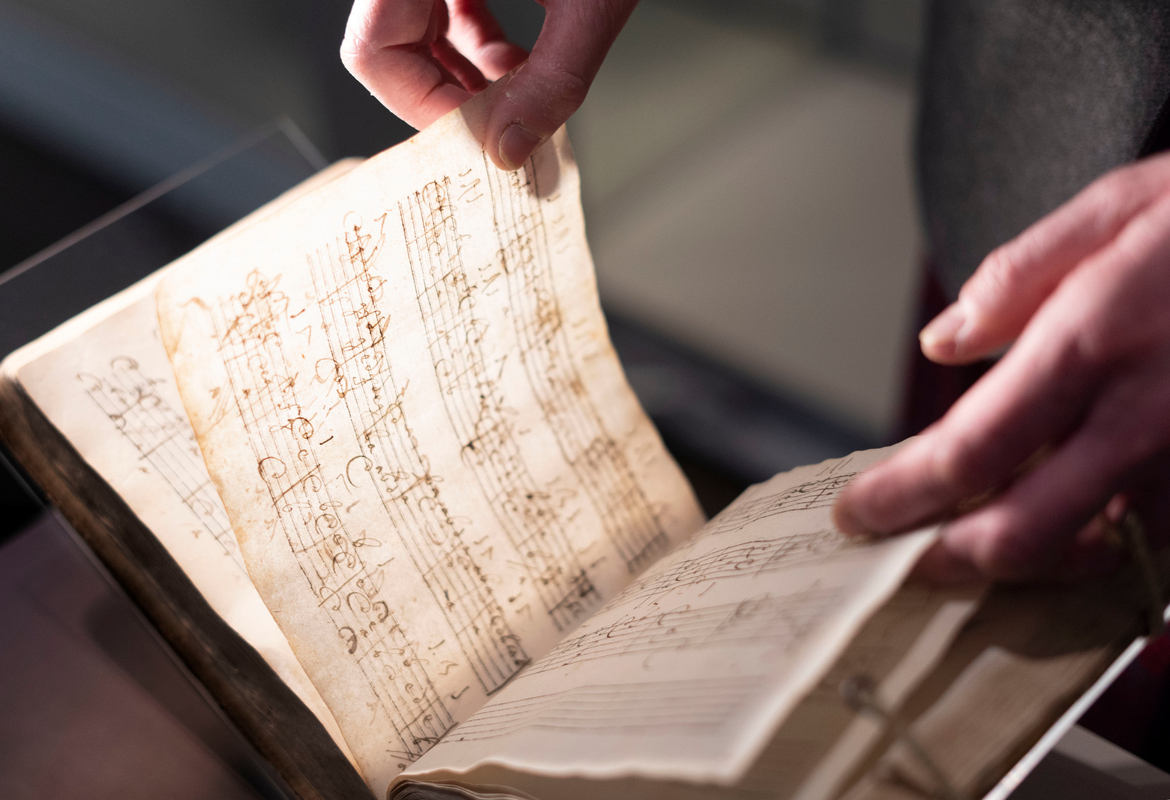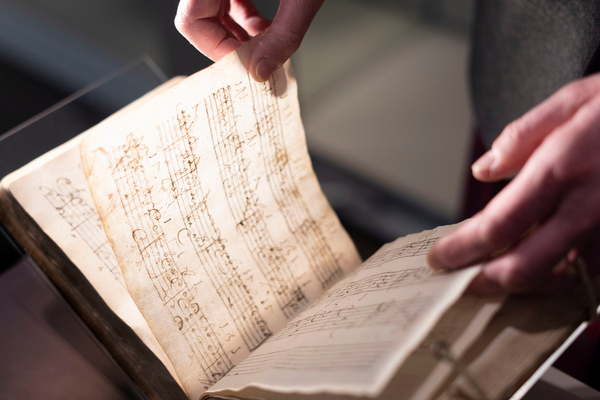Music from a 400 year-old manuscript, which was stopped from export, is to be played in Scotland’s oldest concert venue after the rare volume was acquired by the University of Edinburgh.
The manuscript is one of the most important surviving sources of music for the lute, a very popular instrument in the 1600s and 1700s. It was made in Bavaria in about 1620 and is still in its original binding. Written in French lute tablature – an early notation with similarities to modern guitar tabs – the music is international, including pieces by French, Italian and British composers. There are 320 works, 89 of which are not found in any other manuscript and it contains the famous Lachrimae pavan by John Dowland, one of the most significant composers of the day.
The manuscript will initially be exhibited at St Cecilia’s Hall alongside a lute also dating from c1620. Concerts are planned to take place at the University’s historic venue, where audiences will hear the music from the manuscript as it might have been performed by travelling musicians across the UK and Europe. The volume will also be digitised and made available for researchers as part of the University’s Heritage Collections.
The manuscript was once owned by Arnold Dolmetsch, one of the founders of the Early Music movement, and has been important to lute scholarship for over a century. It had been reserved for sale internationally, but the UK Government imposed an export bar on the book to give UK institutions the chance to secure it.
The University’s purchase was made in partnership with the National Heritage Memorial Fund, and with support from the National Fund for Acquisitions and the Friends of the National Libraries. The University drew funding from its own reserves and from donors, including the Friends of St Cecilia’s Hall, that were given specifically to acquire items for its research collections.

Rare 17th century manuscript of Italian and French lute music.
Image (c) Edinburgh University




